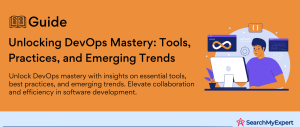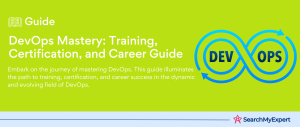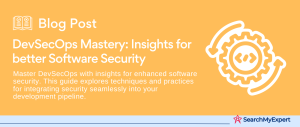Gateway to Enhanced Efficiency and Agility
Serverless Computing and Its Impact in DevOps
Unraveling the Concept of Serverless Computing
Serverless computing is a cloud-computing execution model where cloud providers dynamically manage the allocation and provisioning of servers. In essence, it’s about running your applications without the hassle of managing servers. This paradigm shift focuses on the code, leaving the underlying infrastructure to the cloud provider.
Core Principles of Serverless Computing:
- Abstraction of Servers:
Serverless computing abstracts the server layer, offering a high level of abstraction. This means developers can focus solely on their code. - Event-Driven Architecture: It operates on an event-trigger basis, launching functions only when needed, thus optimizing resource utilization.
- Microservices Oriented: It naturally complements microservices architecture, where applications are broken down into smaller, independent units.
- Scalability:
Serverless architectures are highly scalable, adjusting resources automatically to meet demand. - Pay-Per-Use Pricing Model: Users pay only for the resources consumed during the execution of the function, leading to cost efficiency.
The Synergy of Serverless Computing and DevOps
Incorporating serverless computing into DevOps practices brings a host of benefits:
- Increased Agility: Serverless computing fosters a rapid deployment model, enabling organizations to bring products to market faster.
- Reduced Operational Overhead: With server management and capacity planning offloaded to the cloud provider, DevOps teams can focus more on development and innovation.
- Improved Scalability:
Serverless architectures can automatically scale with demand, making it easier to handle varying workloads. - Cost-Efficiency:
Pay-per-use pricing translates to reduced costs, as you only pay for what you use.
Navigating the Challenges
While serverless computing offers significant advantages, it also presents unique challenges:
- Vendor Lock-in: Relying on a specific cloud provider’s infrastructure and services can lead to dependency and limit flexibility.
- Debugging and Monitoring Complexities: The ephemeral nature of serverless can make debugging more challenging, requiring specialized tools and approaches.
Serverless computing is revolutionizing the way we approach application development and deployment, particularly in the DevOps arena. Its ability to enhance efficiency, reduce costs, and improve scalability makes it an attractive option. However, it’s crucial to navigate its challenges carefully to fully leverage its potential.
Understanding the Serverless Landscape
Exploring the Varieties of Serverless Offerings
Serverless computing, a rapidly evolving landscape, is not a one-size-fits-all concept. It spans several types, each catering to different aspects of application development and deployment.
Function as a Service (FaaS): The cornerstone of serverless computing, FaaS allows developers to deploy individual functions without managing the underlying infrastructure. These functions are event-driven and fully managed by the cloud provider.
Key Characteristics:
- Event-driven and stateless
- Scalable and managed execution environment
- Ideal for microservices architecture
Backend as a Service (BaaS): BaaS provides a suite of backend services like database management, user authentication, and cloud storage, managed by a third-party service provider.
Key Characteristics:
- Focuses on backend services
- Simplifies backend development
- Integrates with front-end development seamlessly
API Gateway as a Service (APIaaS): This service offers a managed platform to create, publish, maintain, monitor, and secure APIs.
Key Characteristics:
- Efficient API management
- Facilitates secure data exchange
- Supports various backend services
Major Cloud Providers’ Serverless Offerings: A Comparative Overview
The serverless landscape is dominated by major cloud providers, each with their unique offerings:
AWS Lambda
- AWS’s flagship serverless compute service
- Seamlessly integrates with other AWS services
- Known for its robust ecosystem and maturity
Azure Functions
- Microsoft’s answer to serverless computing
- Offers seamless integration with other Azure services
- Provides a range of programming language support
Google Cloud Functions
- Google’s serverless solution
- Known for its ease of use and integration with Google Cloud Platform
- Offers strong data analytics capabilities
Each of these services has its strengths and weaknesses, and the choice often depends on specific project requirements, existing cloud infrastructure, and organizational preferences.
The serverless landscape is rich and diverse, offering a range of solutions to cater to different needs in the cloud computing arena. From FaaS to BaaS and APIaaS, these services collectively enhance the agility and efficiency of software development, particularly in a DevOps context.
Integrating Serverless into DevOps Workflow
Seamless Integration of Serverless Computing in DevOps
Serverless computing, when integrated into a DevOps workflow, can significantly streamline and enhance various stages of the software development life cycle.
Continuous Integration (CI) and Continuous Delivery (CD)
CI in Serverless:
- Automated Testing:
Serverless functions can be automatically tested for every code check-in, ensuring code quality and consistency. - Version Control Integration: Serverless platforms can be integrated with version control systems, enabling automated deployments upon code commits.
- Rapid Feedback Loops:
Quick execution of serverless functions aids in faster feedback, essential for agile development.
CD with Serverless:
- Automated Deployments:
Serverless architectures allow for automated and scalable deployments, with the ability to roll out features quickly. - Environment Consistency:
Ensures consistency across different environments, from development to production. - Blue/Green Deployments: Facilitates blue/green deployment strategies, allowing for zero-downtime updates.
Infrastructure as Code (IaC) with Serverless
- Automated Infrastructure Management: Serverless computing supports IaC, enabling teams to automatically manage and provision the infrastructure through code.
- Version Controlled Infrastructure:
Changes in infrastructure are version-controlled, providing audit trails and rollback capabilities. - Scalability and Flexibility: IaC in serverless environments allows for scalable and flexible infrastructure management, aligning closely with DevOps principles.
Leveraging Tools and Frameworks for Serverless Development
To maximize the benefits of serverless in a DevOps context, utilizing specific tools and frameworks is crucial:
Serverless Framework:
- A leading framework for building serverless applications.
- Offers features like function deployment, event triggering, and resource provisioning.
- Supports multiple cloud providers, enhancing cross-platform compatibility.
SAM CLI (Serverless Application Model Command Line Interface):
- An AWS tool for building serverless applications.
- Simplifies the process of developing, testing, and deploying serverless applications.
- Integrates well with AWS services, providing a seamless development
Integrating serverless computing into the DevOps workflow presents a pathway to more efficient, scalable, and agile software development. The use of specialized tools and frameworks like the Serverless Framework and SAM CLI further empowers teams to leverage the full potential of serverless in a DevOps setting.
Building and Deploying Serverless Applications
The Journey from Concept to Deployment in Serverless Applications
Building Serverless Applications
Writing Serverless Functions:
- Function-First Approach: Begin with the core functionality. Each serverless function should perform a single, well-defined task.
- Language and Runtime:
Choose a programming language and runtime supported by your serverless platform. Popular choices include Python, Node.js, and Java.
Configuring Triggers and Events:
- Event Sources:
Identify the events that will trigger your functions. These can be HTTP requests, database updates, or custom events. - Trigger Configuration:
Configure triggers in your serverless platform. This links events to your functions, ensuring they run in response to specific activities.
Setting Up Monitoring and Logging:
- Monitoring Tools:
Utilize monitoring tools provided by the serverless platform or third-party solutions for real-time performance tracking. - Logging Practices: Implement logging within your functions to capture crucial runtime information and facilitate debugging.
Deploying Serverless Applications
Deployment Process:
- Deployment Tools: Use tools like the Serverless Framework or SAM CLI for deployment.
- Automated Deployments: Integrate with CI/CD pipelines for automated testing and deployment.
Version Management:
- Immutable Deployments: Each deployment should be immutable, meaning new deployments create new versions of the function.
- Rollback Mechanisms: Implement strategies to quickly rollback to previous versions in case of failures.
Best Practices for Serverless Development
Modularity:
- Design functions to be independent and reusable. This enhances scalability and maintainability.
Code Organization:
- Organize code in a way that separates business logic from serverless infrastructure code. This improves readability and makes the codebase more manageable.
Error Handling:
- Implement robust error handling within functions. Catch and log errors effectively to aid in troubleshooting.
State Management:
- Understand the stateless nature of serverless functions and manage state externally when necessary.
Performance Optimization:
- Optimize function performance by minimizing dependencies and reducing function startup times.
Security Best Practices:
- Follow security best practices, such as principle of least privilege, to ensure your serverless applications are secure.
Building and deploying serverless applications involves a range of activities from writing and configuring serverless functions to setting up monitoring and logging. Adhering to best practices in serverless development ensures the creation of efficient, scalable, and maintainable applications.
Monitoring and Observability in Serverless
Navigating the Complexities of Serverless Monitoring
Challenges in Serverless Monitoring and Observability
- Ephemeral Nature:
Serverless functions are short-lived, making traditional monitoring methods less effective. - Distributed Architecture:
The distributed nature of serverless applications complicates the tracking of requests and performance across services. - Granular Scalability:
Serverless functions scale at a granular level, requiring monitoring solutions that can handle high levels of granularity. - Vendor-Specific Metrics:
Each cloud provider offers different metrics and logging formats, adding to the complexity of a unified monitoring approach.
Tools and Techniques for Effective Serverless Monitoring
Cloud-Based Monitoring Services:
- AWS CloudWatch and AWS X-Ray: Provide monitoring and tracing for AWS serverless applications.
- Azure Monitor and Application Insights: Offer insights into Azure serverless applications.
- Google Cloud Operations Suite: Delivers monitoring and logging for Google Cloud serverless functions.
Custom Logging Solutions:
- Implement custom logging within serverless functions to capture detailed information about function execution and performance.
- Utilize log aggregation tools to consolidate logs from various functions for analysis.
Third-Party Monitoring Tools:
- Tools like Datadog, New Relic, and Splunk offer specialized capabilities for monitoring serverless applications.
- These tools provide comprehensive dashboards, alerting, and analytics features.
Distributed Tracing:
- Implement distributed tracing to track requests as they move through different serverless components.
- Tools like Jaeger and Zipkin can be integrated for end-to-end tracing.
Performance Testing:
- Regular performance testing helps in understanding the behavior of serverless applications under different load conditions.
Error Tracking:
- Use error tracking tools to capture, log, and analyze exceptions and errors in serverless applications.
Monitoring and observability in serverless environments present unique challenges due to their ephemeral and distributed nature. However, by leveraging cloud-based monitoring services, custom logging solutions, and advanced tools, developers can gain deep insights into their serverless applications, ensuring optimal performance and reliability.
Security Considerations for Serverless Computing
Addressing the Unique Security Challenges in Serverless Environments
Key Security Considerations in Serverless Computing
Identity and Access Management (IAM):
- Ensuring strict IAM policies to control which functions have access to specific resources.
- Utilizing least privilege principles to minimize the risk of unauthorized access.
Data Security:
- Implementing encryption in transit and at rest to protect sensitive data.
- Employing data masking and tokenization techniques to further secure data.
Function Isolation:
- Ensuring that functions are isolated from each other to prevent cross-function attacks.
- Using dedicated execution environments for sensitive functions.
Best Practices for Securing Serverless Applications
Strong Authentication and Authorization:
- Implement robust authentication mechanisms, like OAuth or JWT tokens.
- Utilize fine-grained authorization controls to manage function access.
Encryption of Sensitive Data:
- Encrypt sensitive data both in transit and at rest.
- Use cloud provider services or third-party tools for strong encryption.
Secure Function Code:
- Regularly scan function code for vulnerabilities and ensure code quality.
- Keep all dependencies and libraries up to date to avoid security flaws.
Monitoring and Logging:
- Monitor function execution and log activities for unusual behavior.
- Implement real-time alerting for security incidents.
Compliance and Regulations:
- Ensure compliance with relevant regulations like GDPR, HIPAA, etc., especially when handling sensitive data.
Vulnerability Management:
- Conduct regular security assessments and vulnerability scans.
- Quickly patch identified vulnerabilities to minimize exposure.
While serverless computing offers numerous benefits, it also introduces specific security challenges that need to be addressed. By adhering to best practices such as strict IAM policies, strong encryption, and regular security assessments, organizations can enhance the security posture of their serverless applications, ensuring robust protection against threats.
The Future of Serverless Computing in DevOps
Envisioning the Tomorrow of Serverless Computing
Future Trends in Serverless Computing
Increased Adoption in Enterprise Solutions:
- Serverless computing is poised to become more prevalent in enterprise environments, offering scalable, cost-effective solutions for complex business needs.
Advancements in Function-as-a-Service (FaaS):
- Expect to see enhancements in FaaS offerings, with improved performance, reduced cold start times, and expanded language support.
Growth in Edge Computing:
- Serverless architectures will increasingly integrate with edge computing, bringing computation closer to the data source and reducing latency.
Enhanced Integration with AI and Machine Learning:
- Serverless computing will facilitate easier deployment of AI and ML models, enabling more businesses to leverage these technologies.
Evolution of Serverless Security:
- Security in serverless environments will continue to advance, with more sophisticated tools and practices to protect against evolving threats.
Impact on DevOps Practices
- Streamlined Workflows: Serverless computing will further streamline DevOps workflows, making
the software development lifecycle more efficient. - Emphasis on Automation:
Automation will become even more integral in DevOps, particularly in testing, deployment, and monitoring. - Focus on Microservices:
The rise of serverless computing will accelerate the adoption of microservices architecture in DevOps.
Embracing Serverless in DevOps
Serverless computing is not just a fleeting trend; it’s a transformative force reshaping the landscape of software development and deployment. By adopting serverless computing, DevOps teams can reap numerous benefits:
- Enhanced Efficiency: Serverless architectures streamline processes, allowing teams to focus on code rather than infrastructure management.
- Cost-Effectiveness:
Pay-per-use pricing models lead to significant cost savings, especially for fluctuating workloads. - Scalability and Flexibility: Serverless computing provides unparalleled scalability and flexibility, adapting to changing demands effortlessly.
- Innovation and Agility: Serverless computing fosters an environment of innovation, enabling teams to rapidly develop and deploy new features.
Conclusion
As serverless computing continues to evolve, its integration into DevOps practices is set to deepen, offering a pathway to more agile, efficient, and innovative software development.
Collaborate with the best in DevOps technology DevOps Service Agencies.
Table of Contents
Toggle






